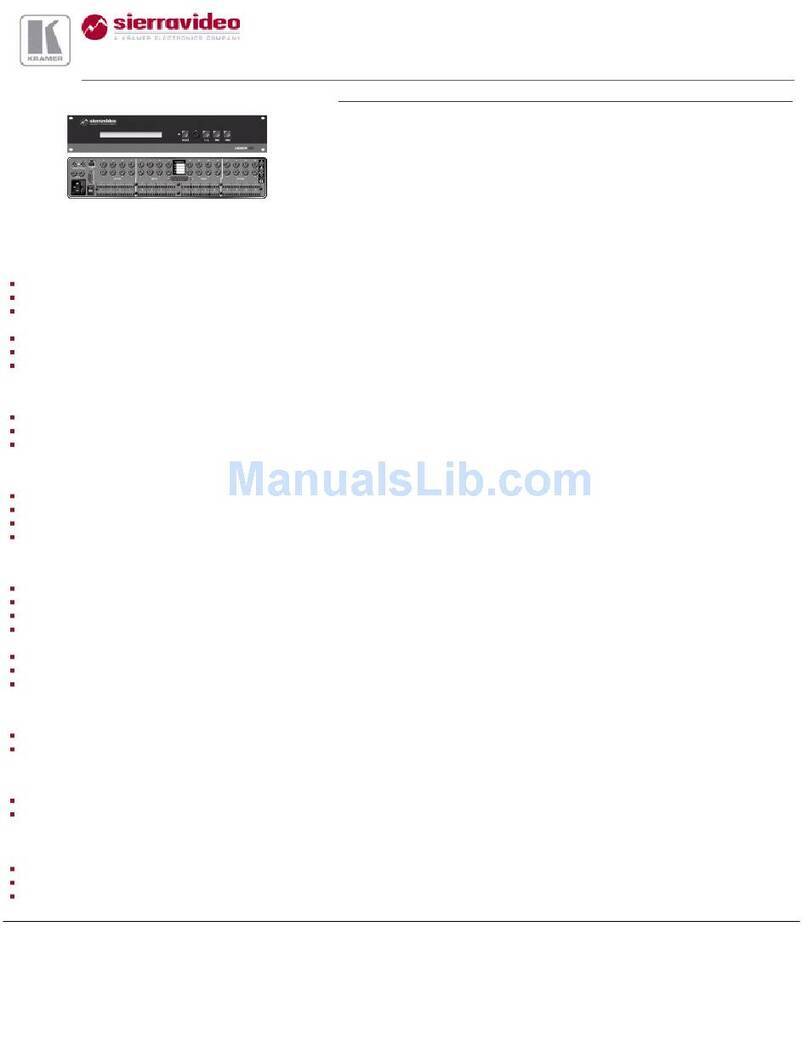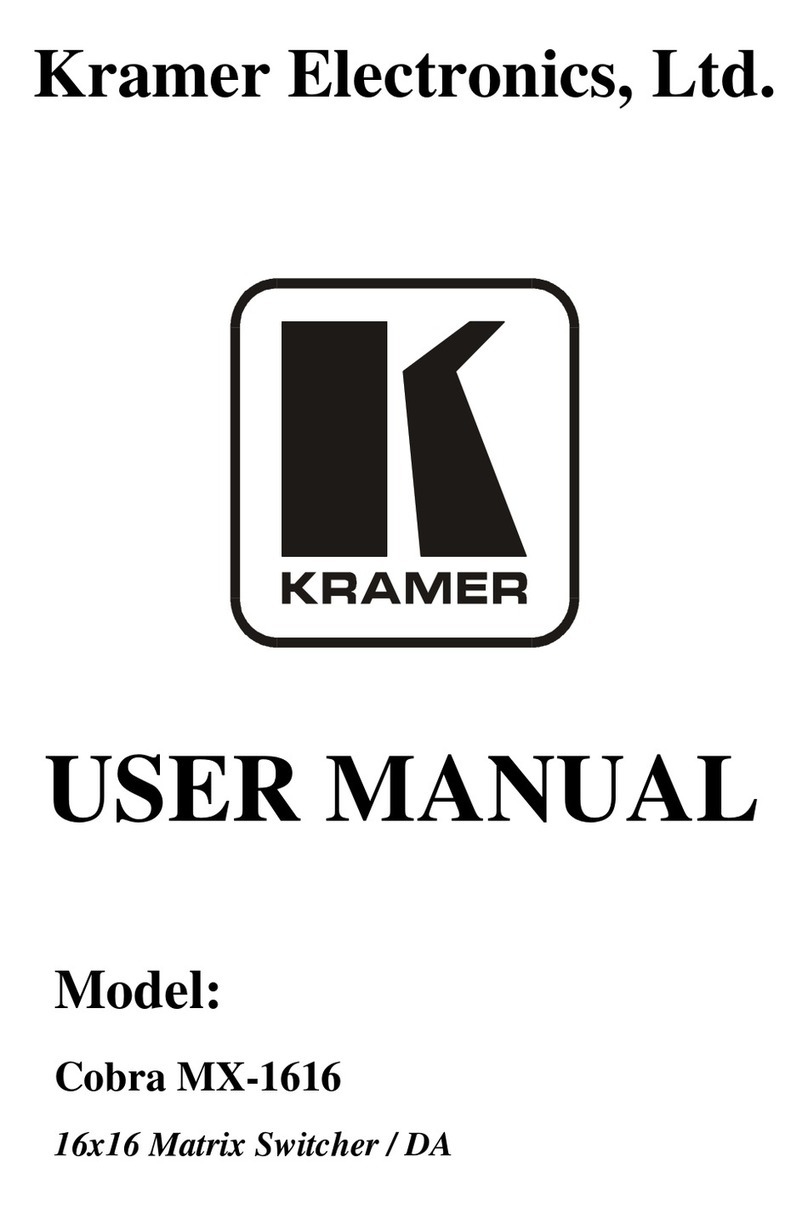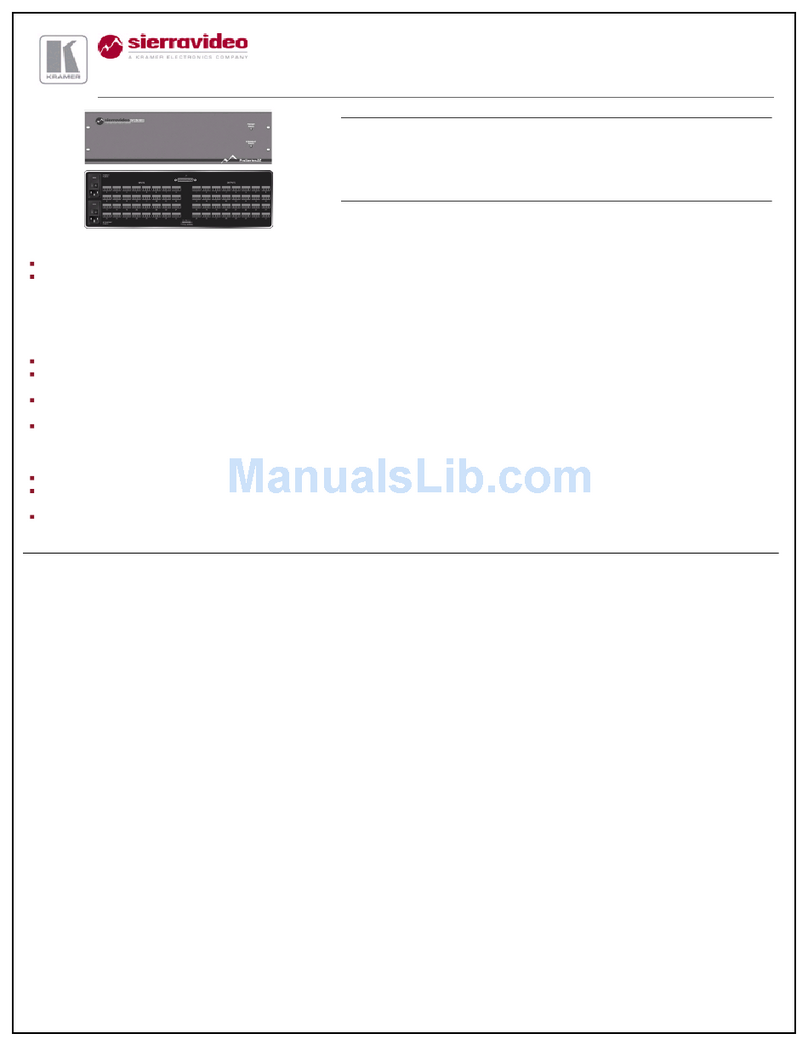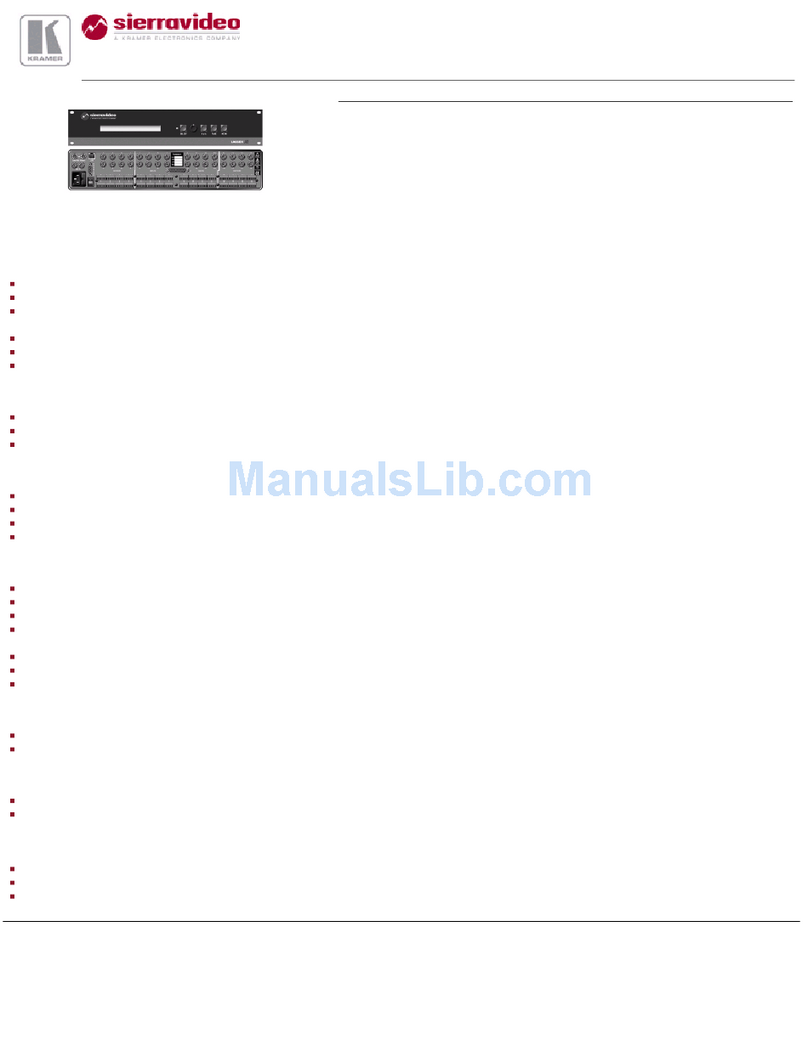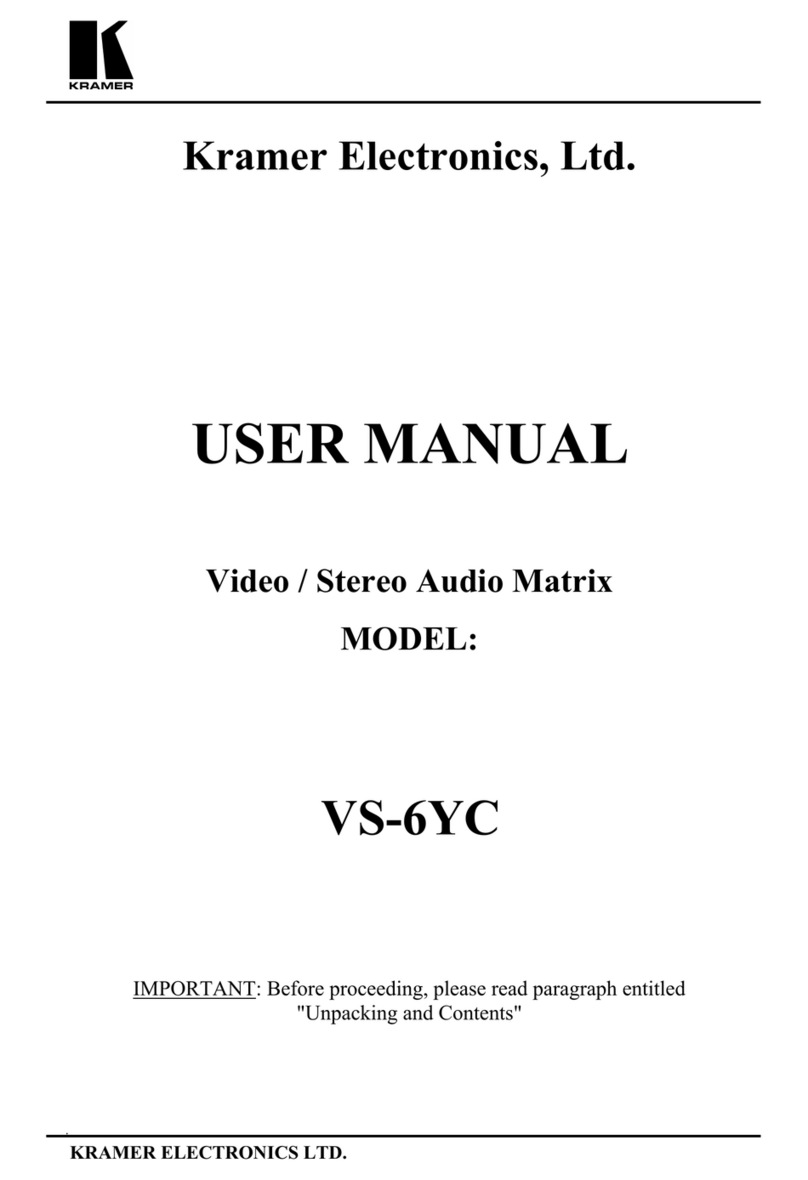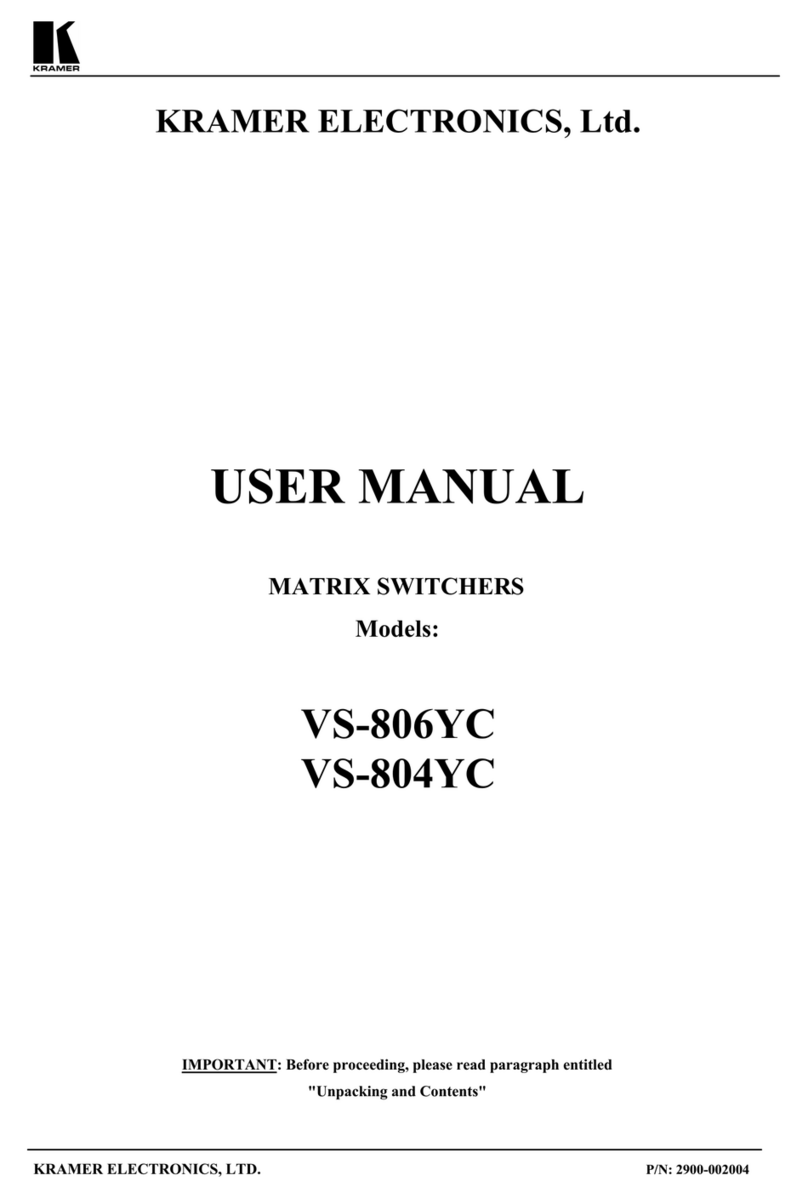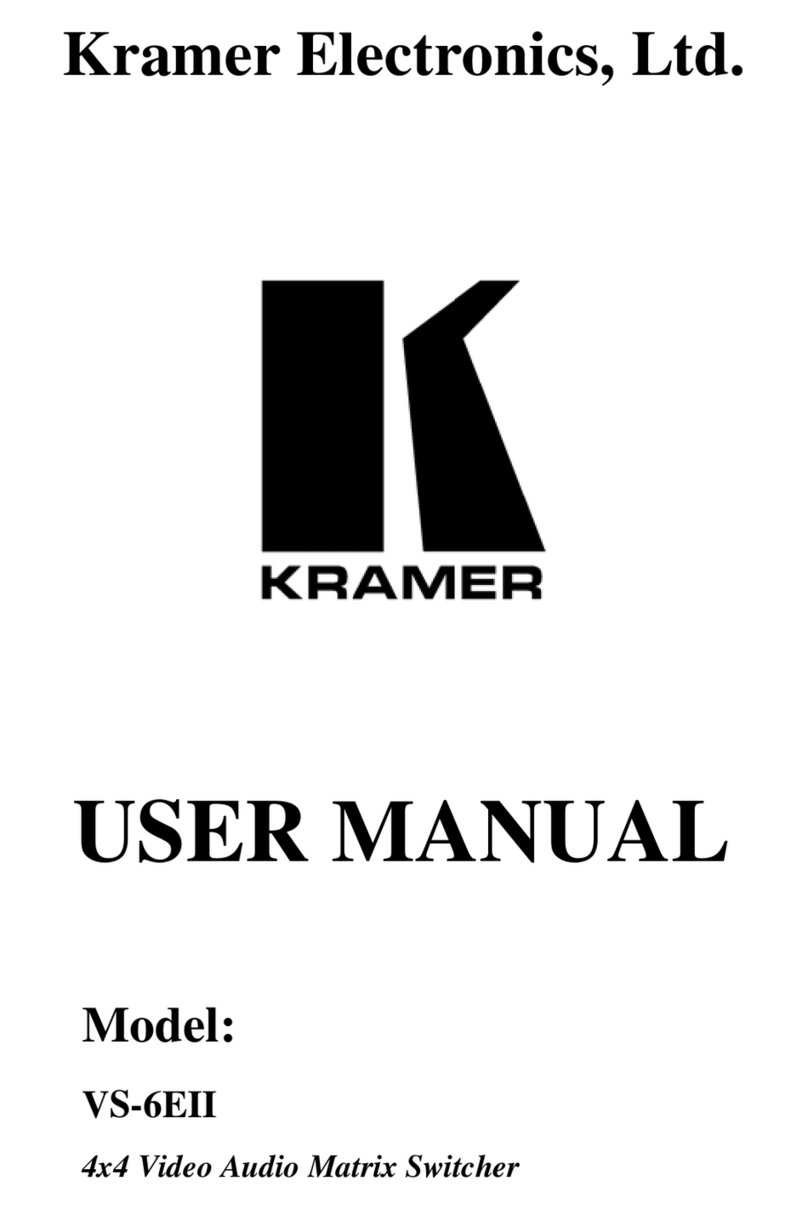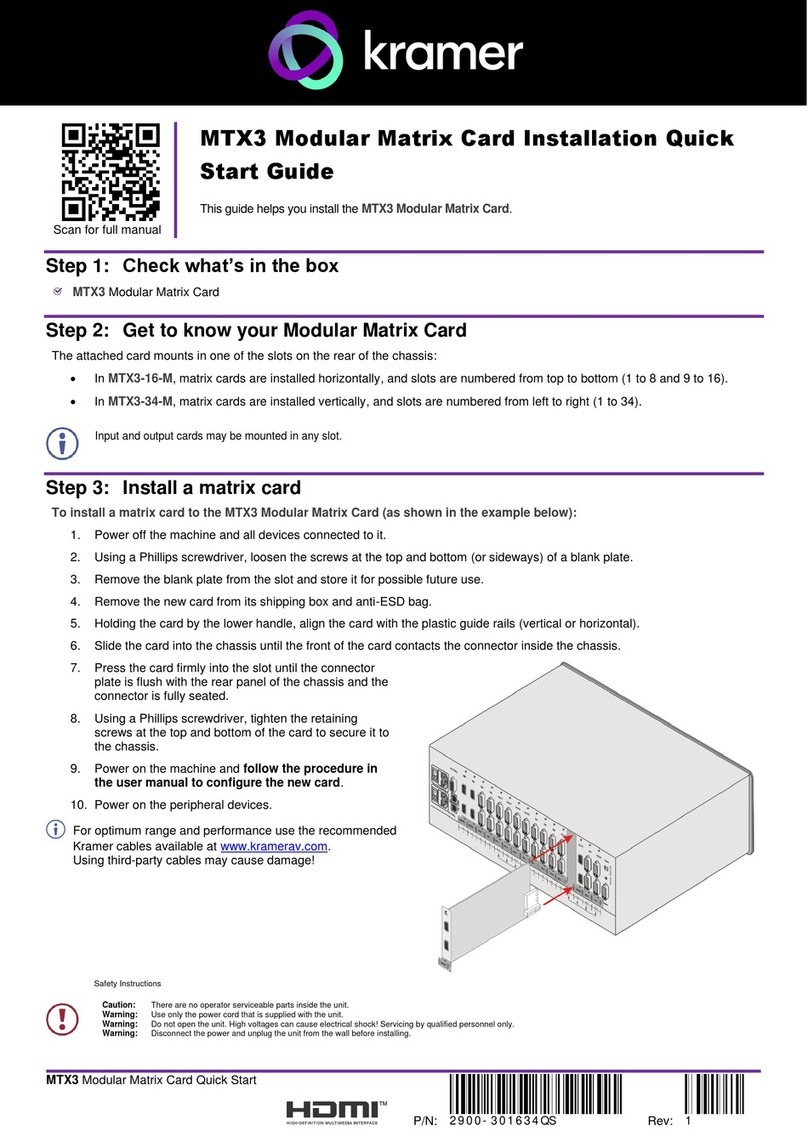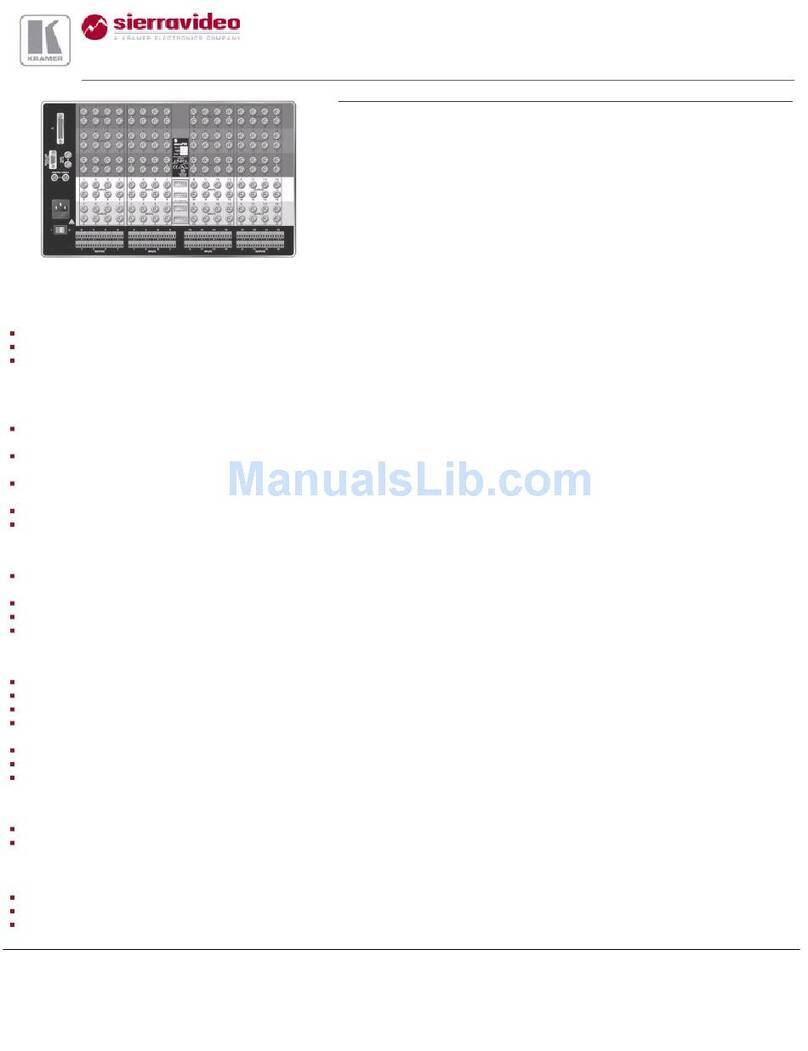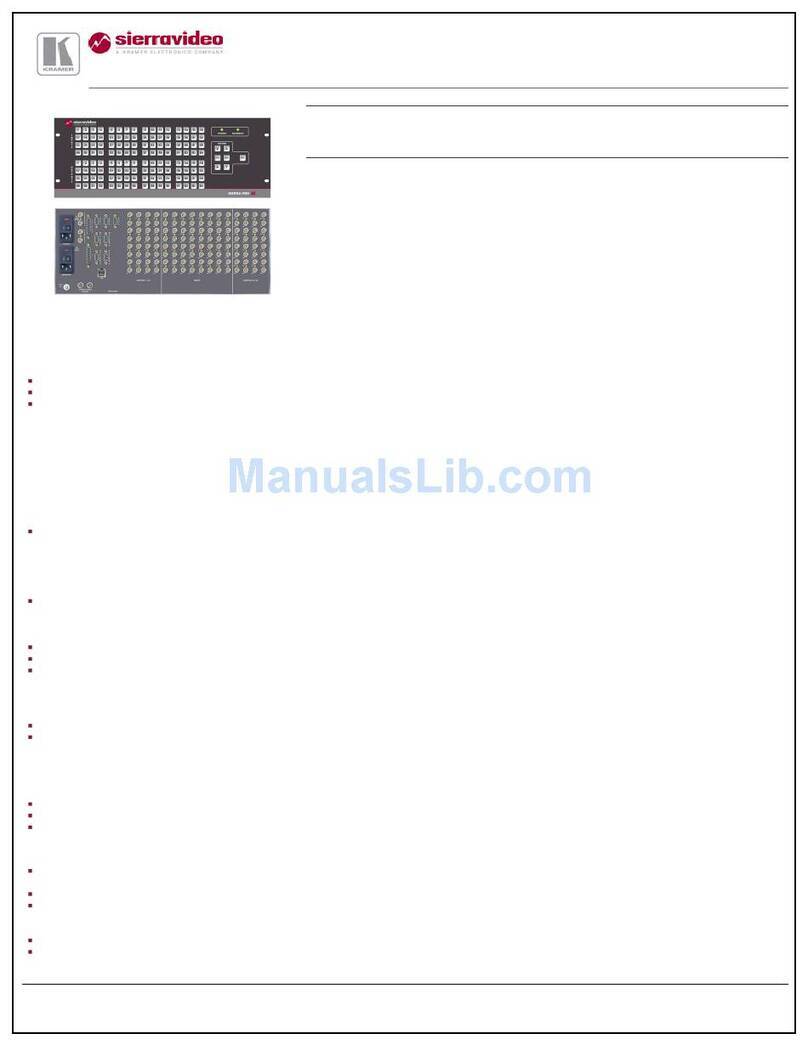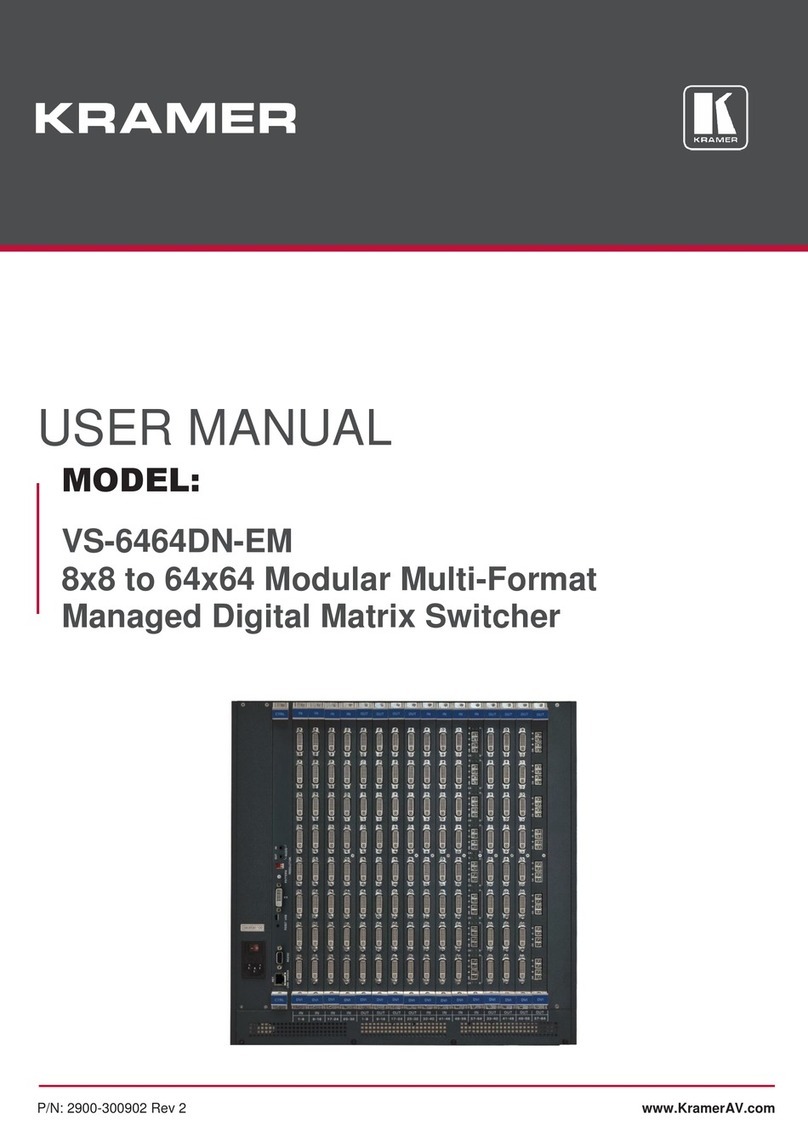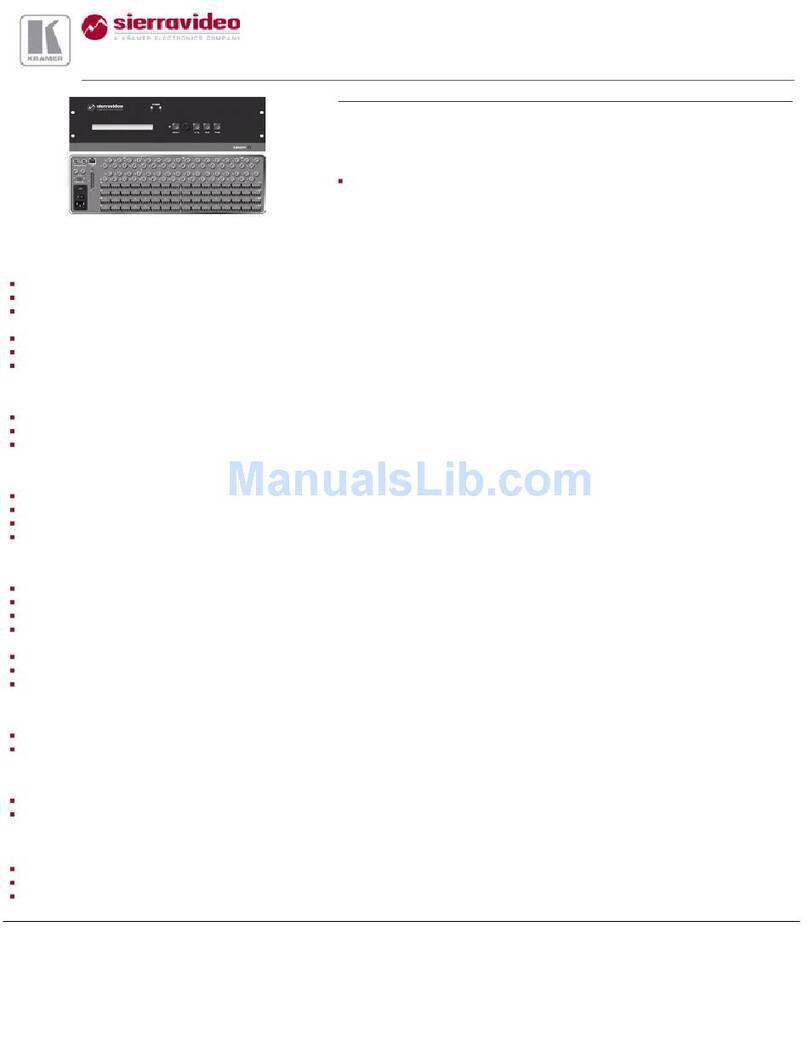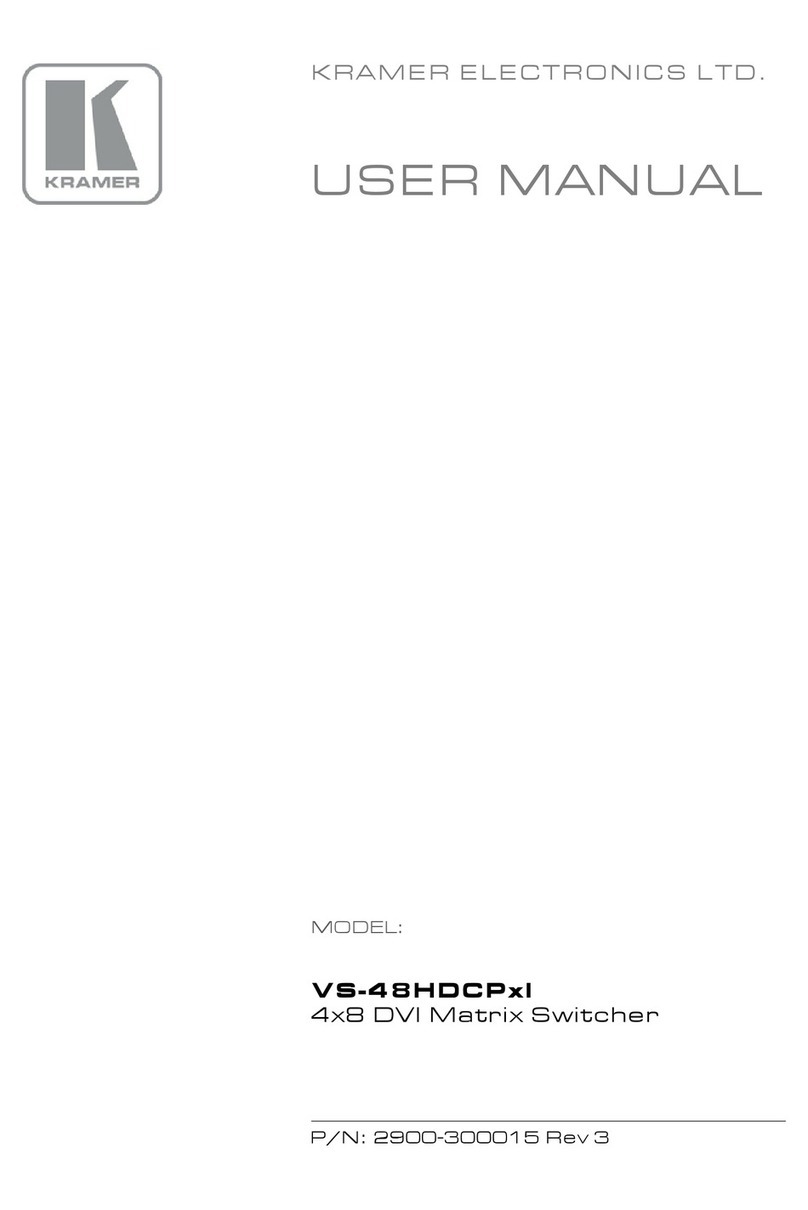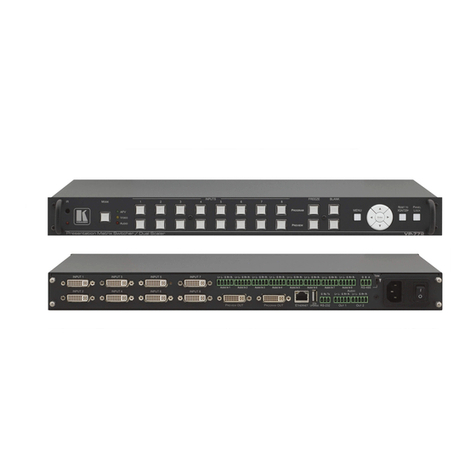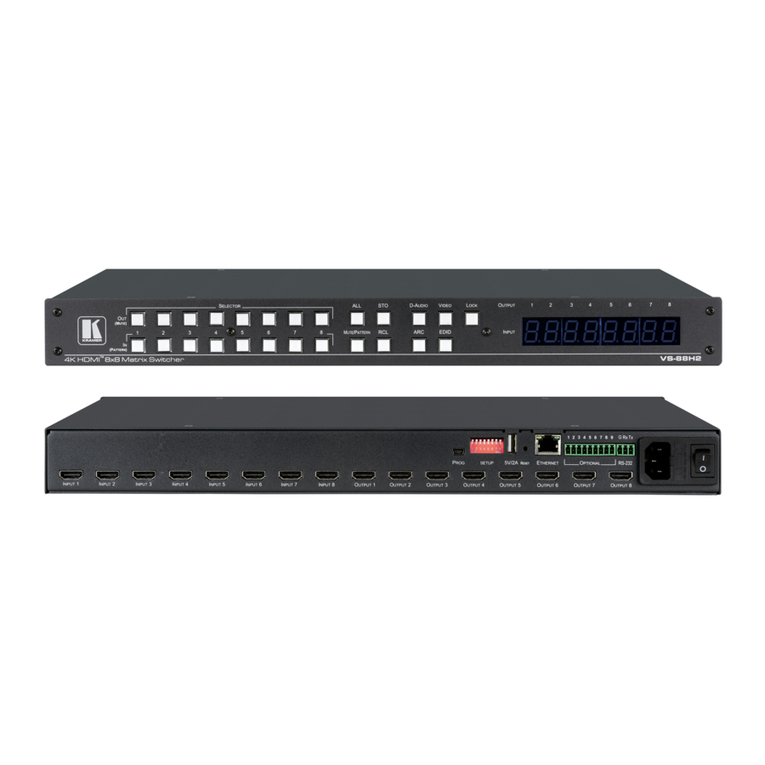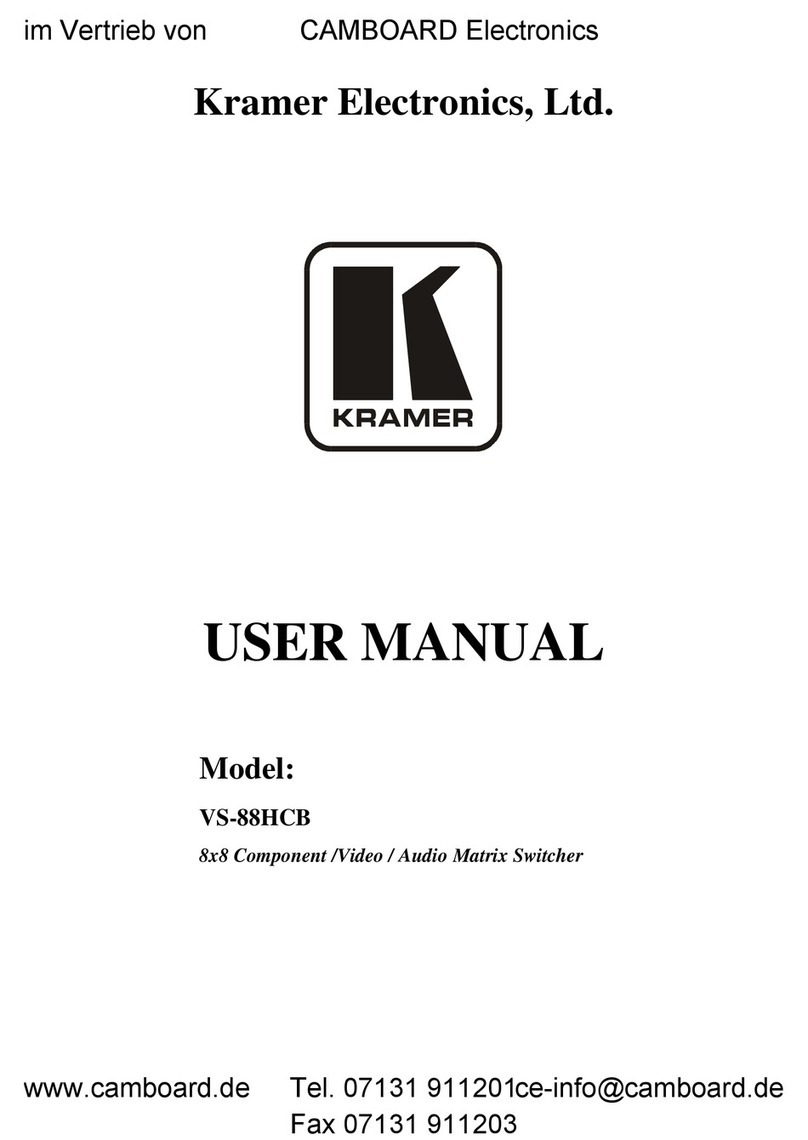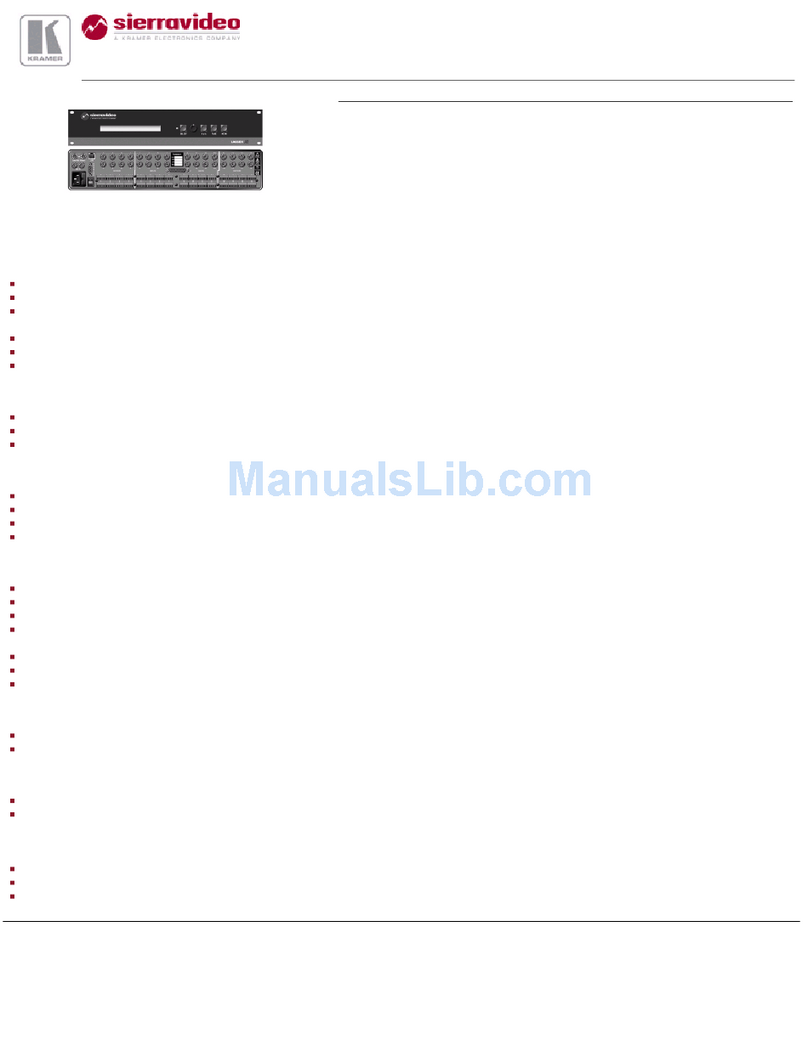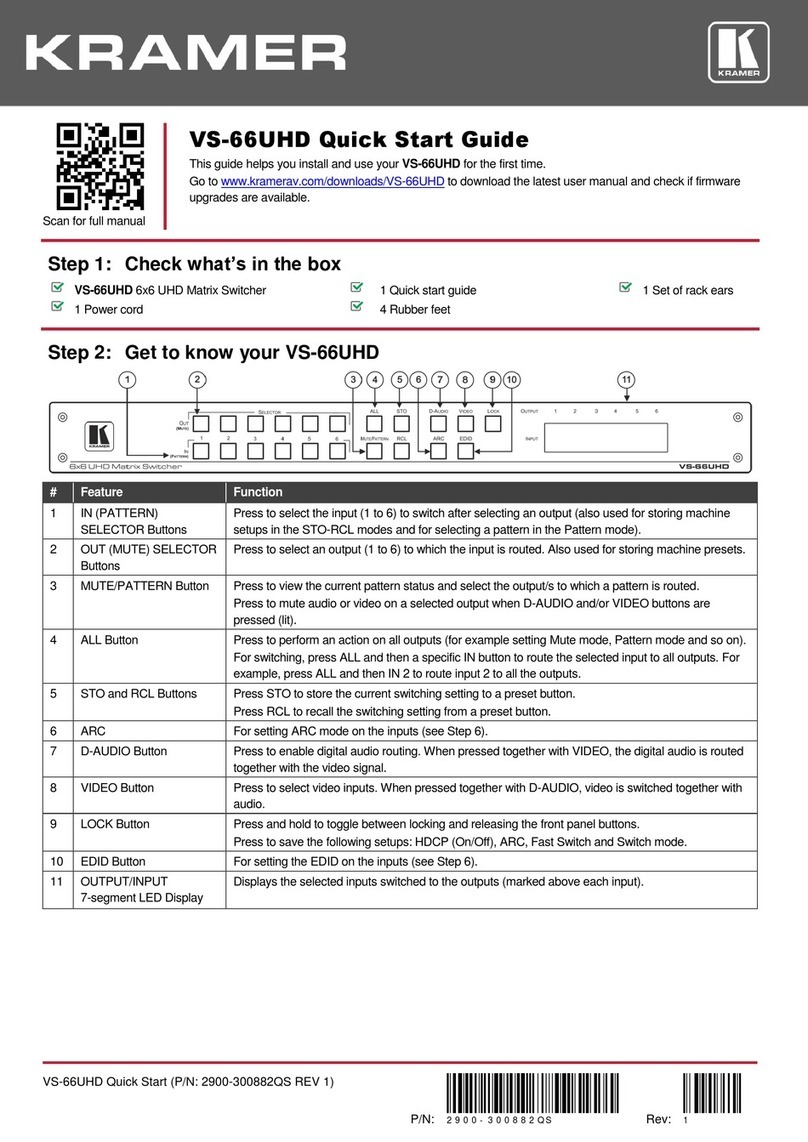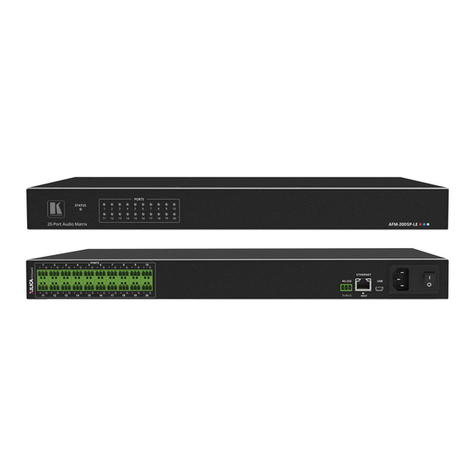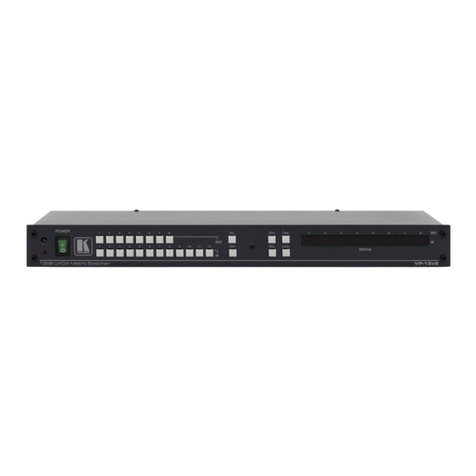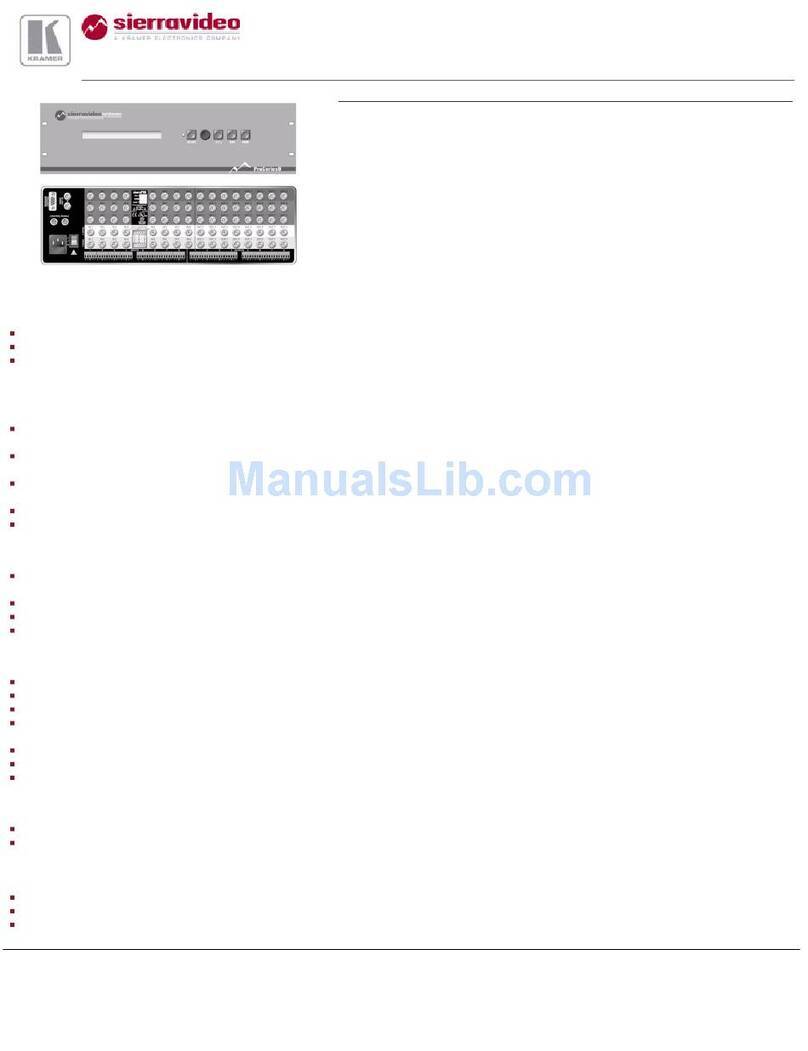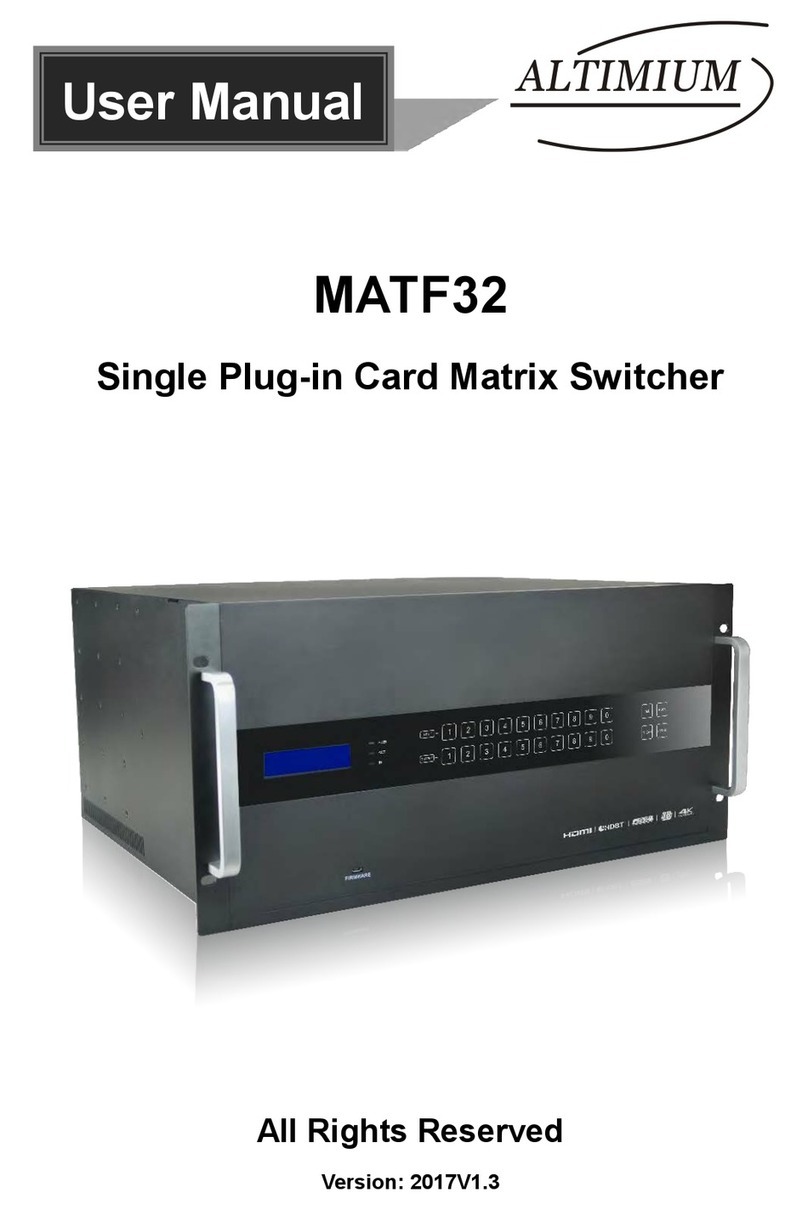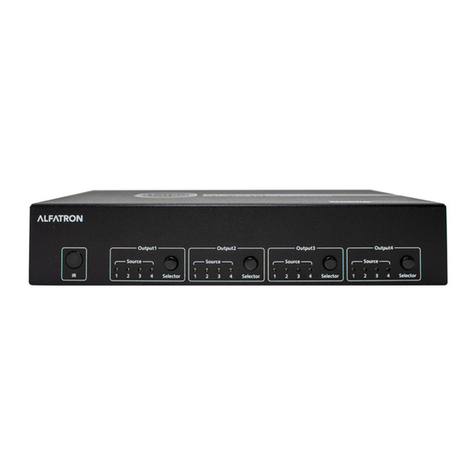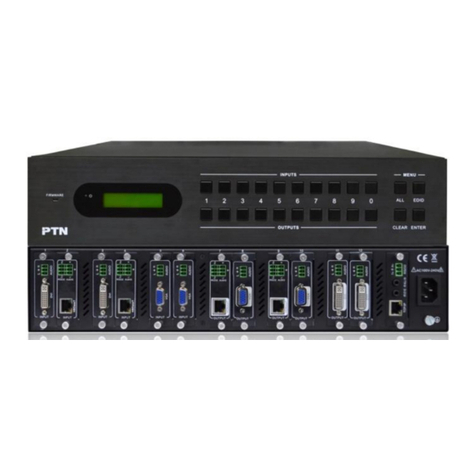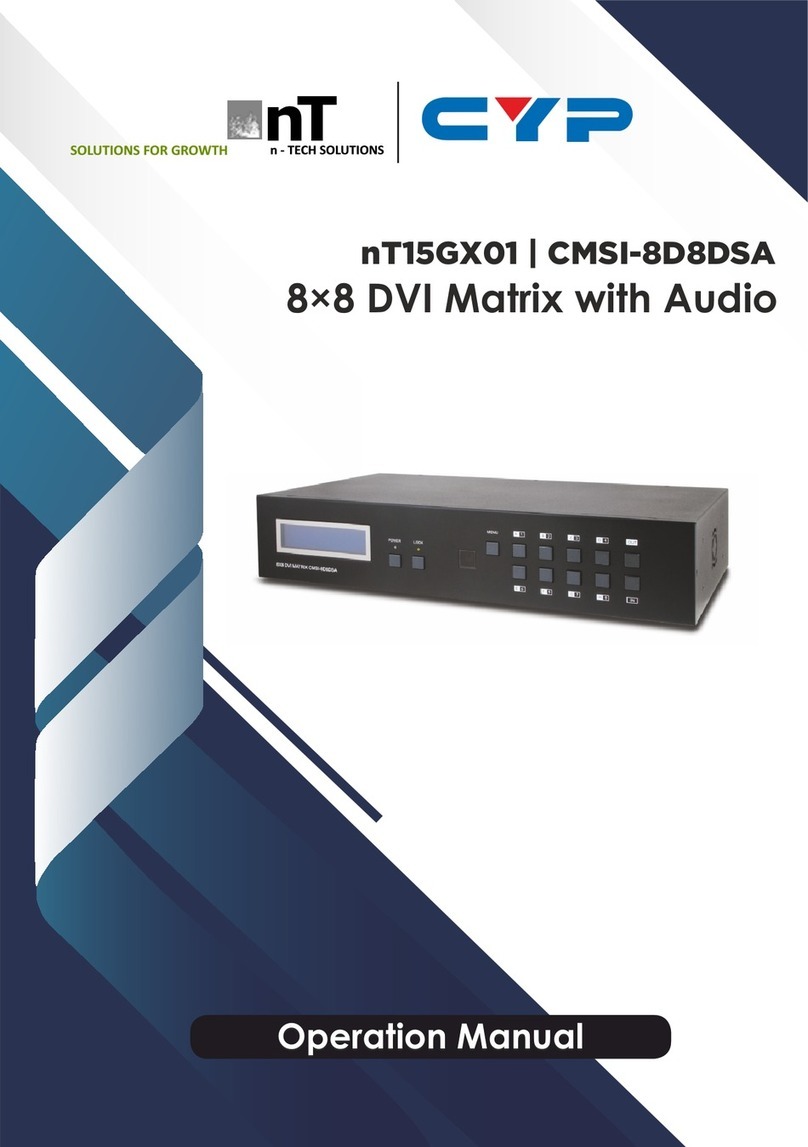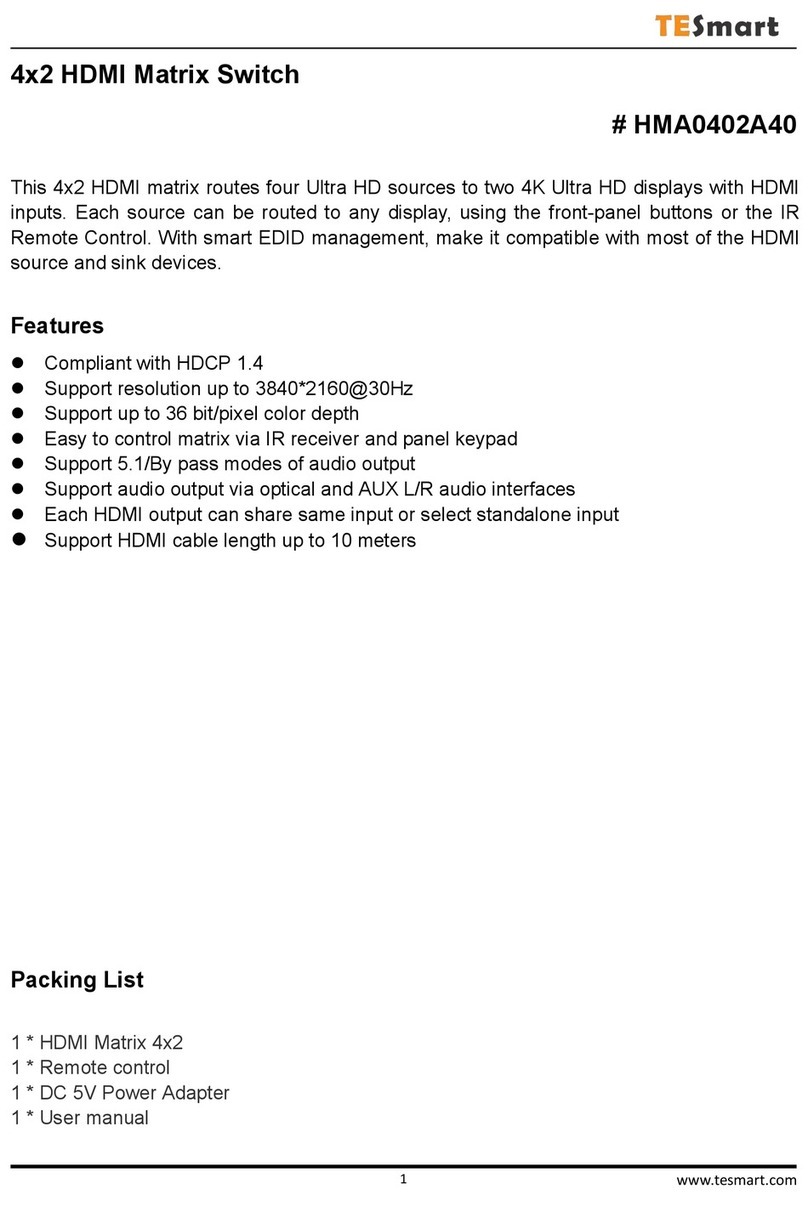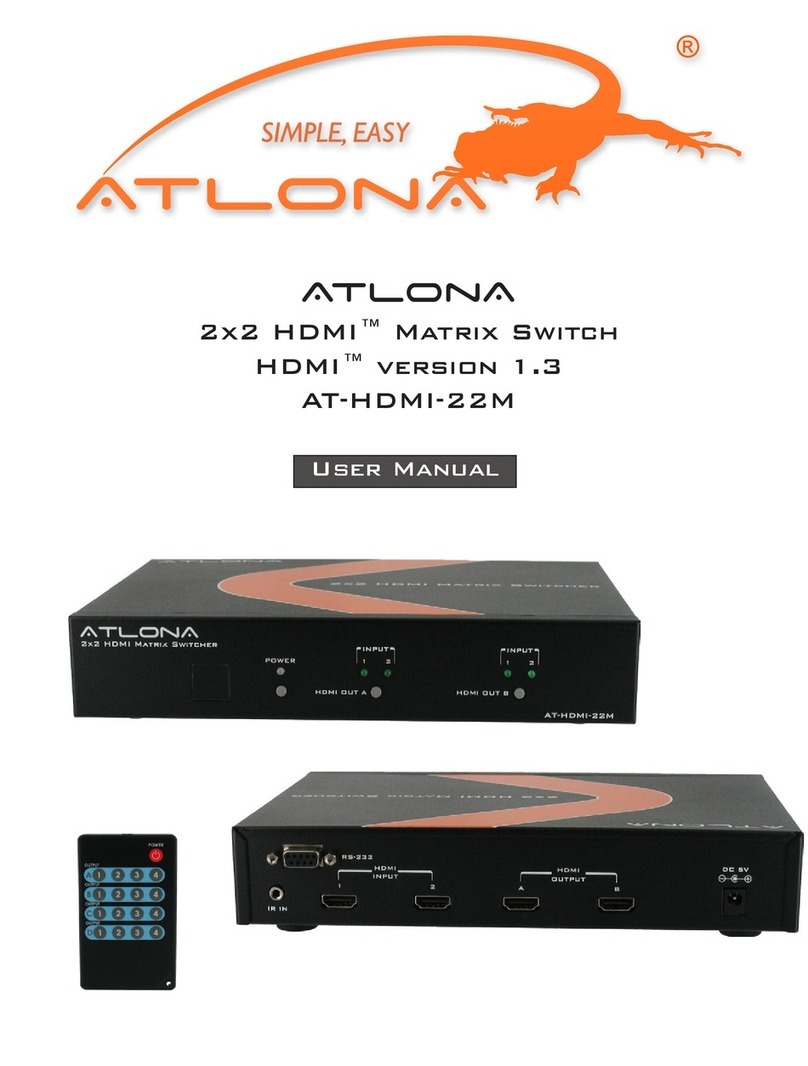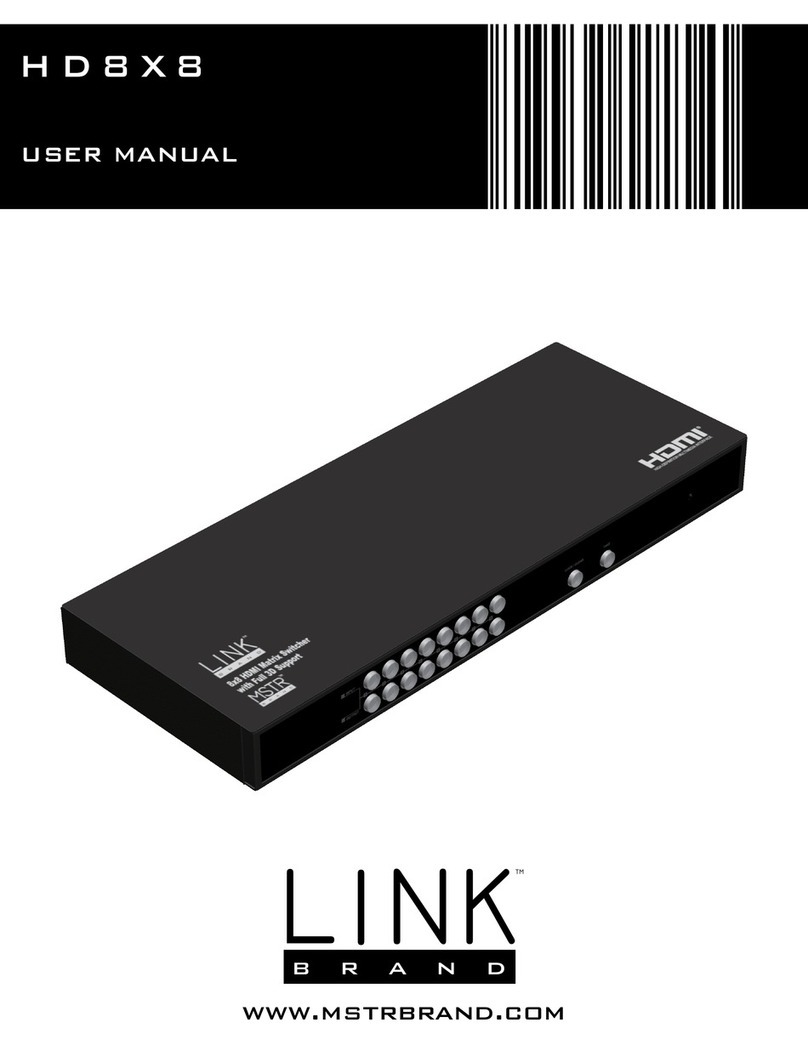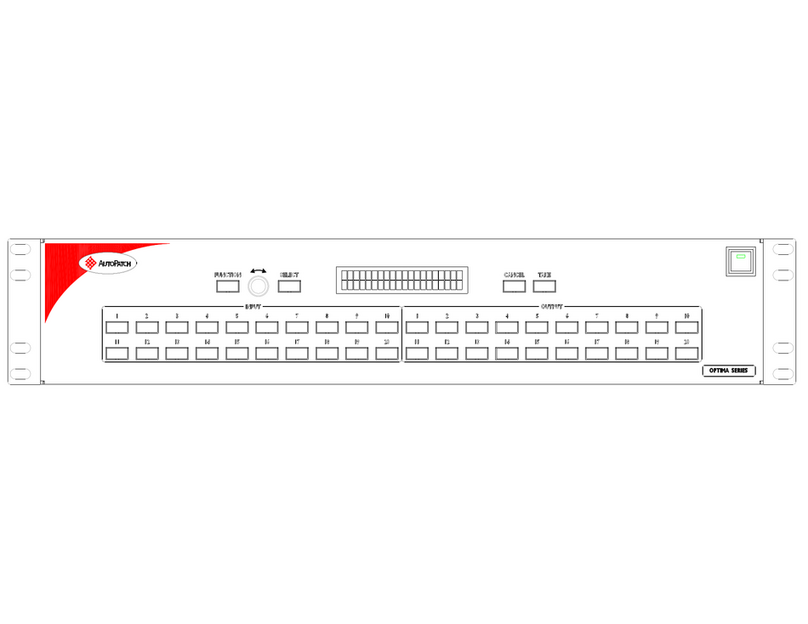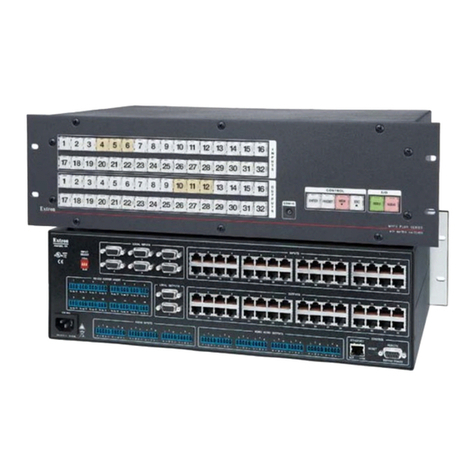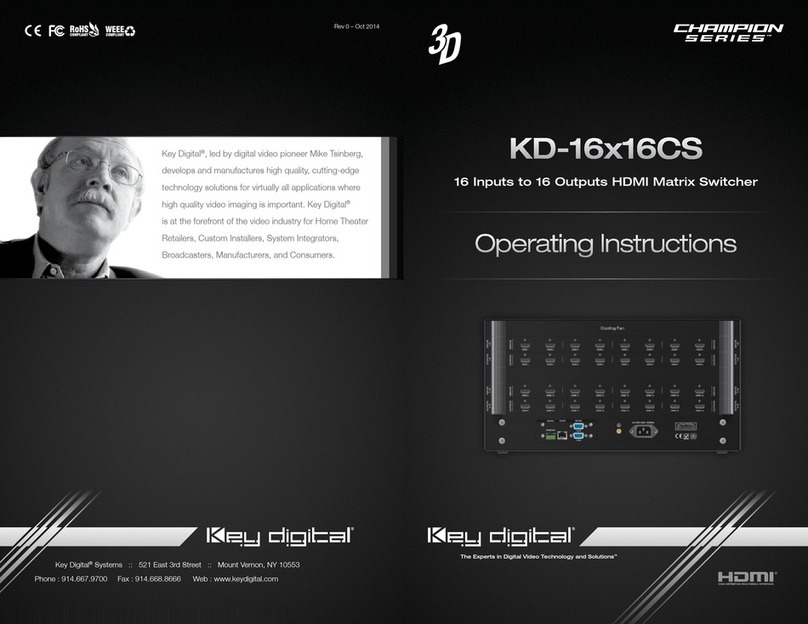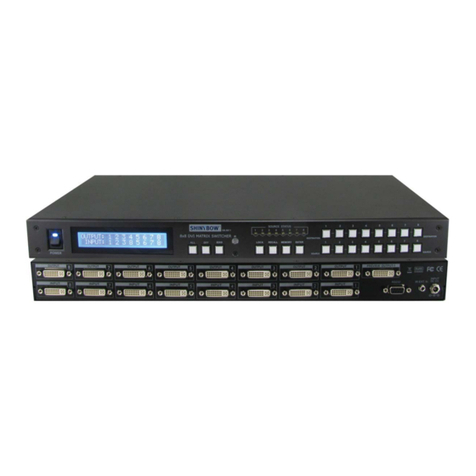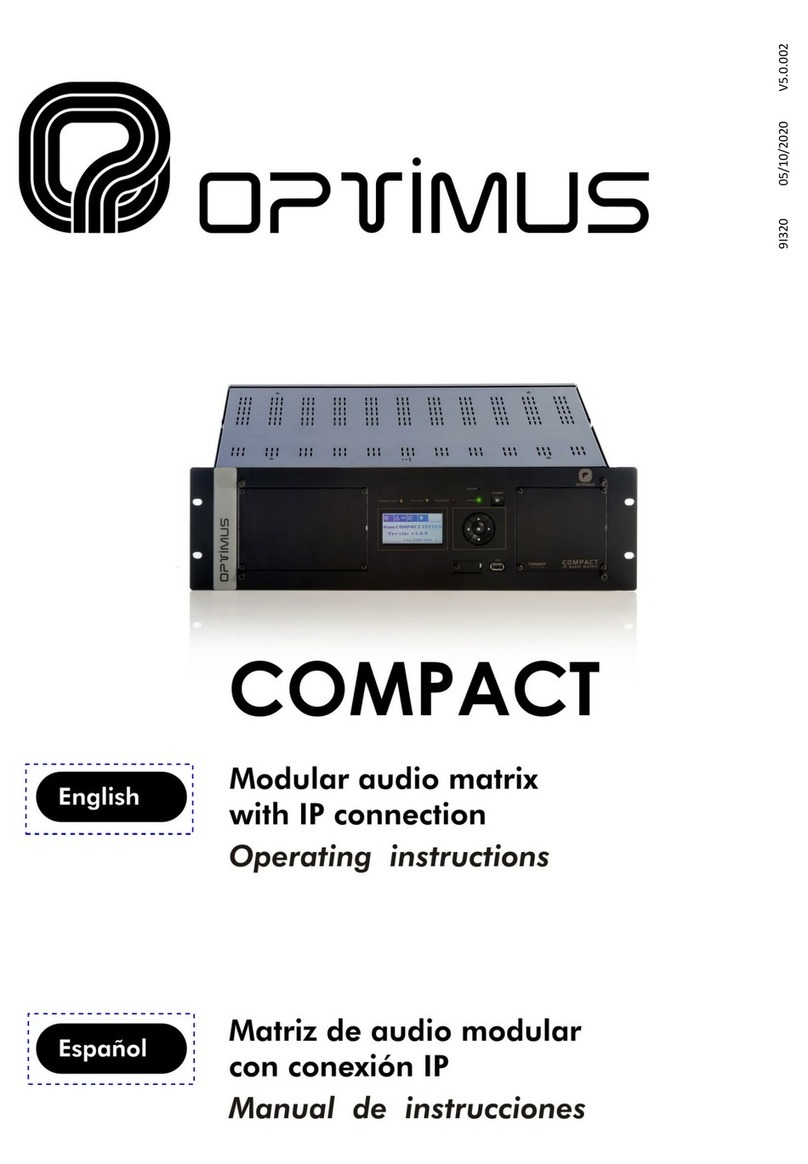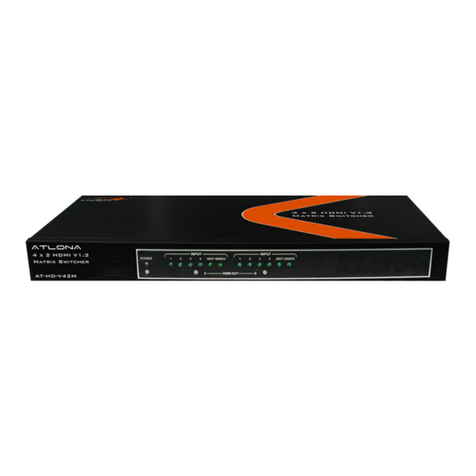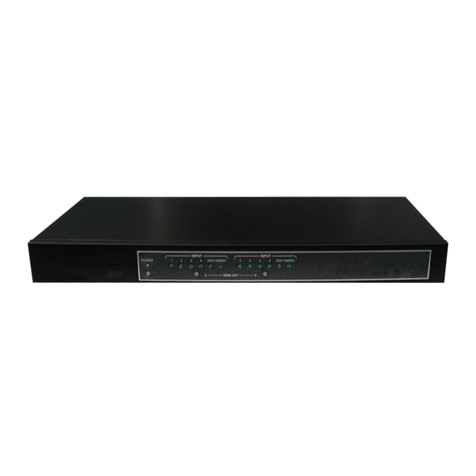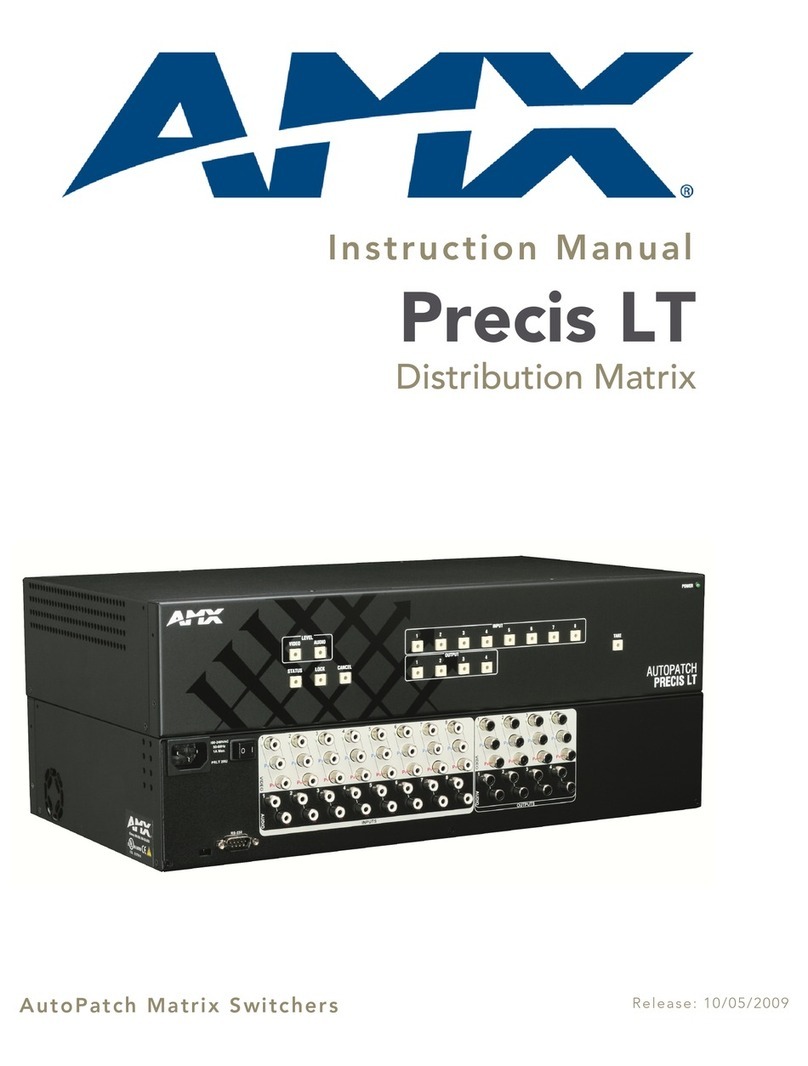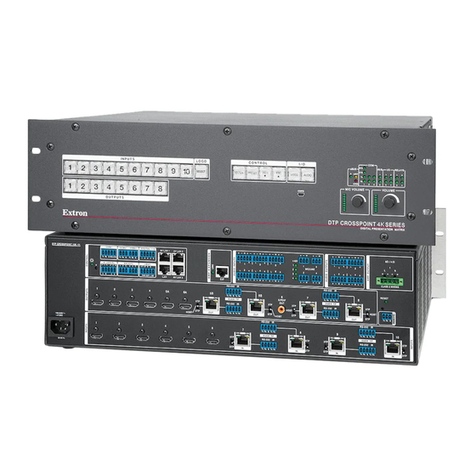11 3Table of Hex Codes for Serial Communication 29
12 Hex Tables for Audio Input/Output Gain Control 30
12.1 Hex Tables for Audio Input Gain Control 30
12.2 Hex Tables for Audio Output Gain Control 32
13 Kramer Protocol 2000 34
Figures
Figure 1: VP-1608 16x8 RGBHV/Balanced Audio Matrix 4
Figure 2: VP-1608 Underside Flash Program Switches 6
Figure 3: Connecting the VP-1608 9
Figure 4: Connecting the Balanced Stereo Audio Input/Output 10
Figure 5: Connecting the Unbalanced Stereo Audio Input 10
Figure 6: Connecting an Unbalanced Stereo Audio Output 10
Figure 7: Connecting a PC Without Using a Null-Modem Adapter 11
Figure 8: Controlling via RS-485 (for example, using an RC-3000) 12
Figure 9: Control Configuration via RS-232 and RS-485 14
Figure 10: Controlling via an RS-485 Controller 16
Figure 11: DIP-Switch Setup on a Single Machine 17
Figure 12: VP-1608 Unit Characteristics 22
Figure 13: VP-1608 Underside Flash Program Switches Set for Upgrade 23
Figure 14: Splash Screen 24
Figure 15: Atmel – Flip Window 24
Figure 16 Device Selection Window 24
Figure 17: Device Selection Window 25
Figure 18: Loading the Hex 25
Figure 19: RS-232 Window 26
Figure 20: Atmel – Flip Window (Connected) 26
Figure 21: Atmel – Flip Window (Operation Completed) 27
Tables
Table 1: Front Panel VP-1608 16x8 RGBHV/Balanced Audio Matrix Features 5
Table 2: Rear Panel VP-1608 16x8 RGBHV/Balanced Audio Matrix Features 6
Table 3: VP-1608 Underside (Flash Program Switches) Features 6
Table 4: MACHINE # DIP-switch Settings 12
Table 5: DELAY DIP-switch Settings 13
Table 6: Technical Specifications of the VP-1608 28
Table 7: VP-1608 Hex Codes for Switching via RS-232/RS-485 in Breakaway Mode 29
Table 8: VP-1608 Hex Codes for Audio Input Gain Control 31
Table 9: VP-1608 Hex Codes for Audio Output Gain Control 33
Table 10: Protocol Definitions 34
Table 11: Instruction Codes for Protocol 2000 35
